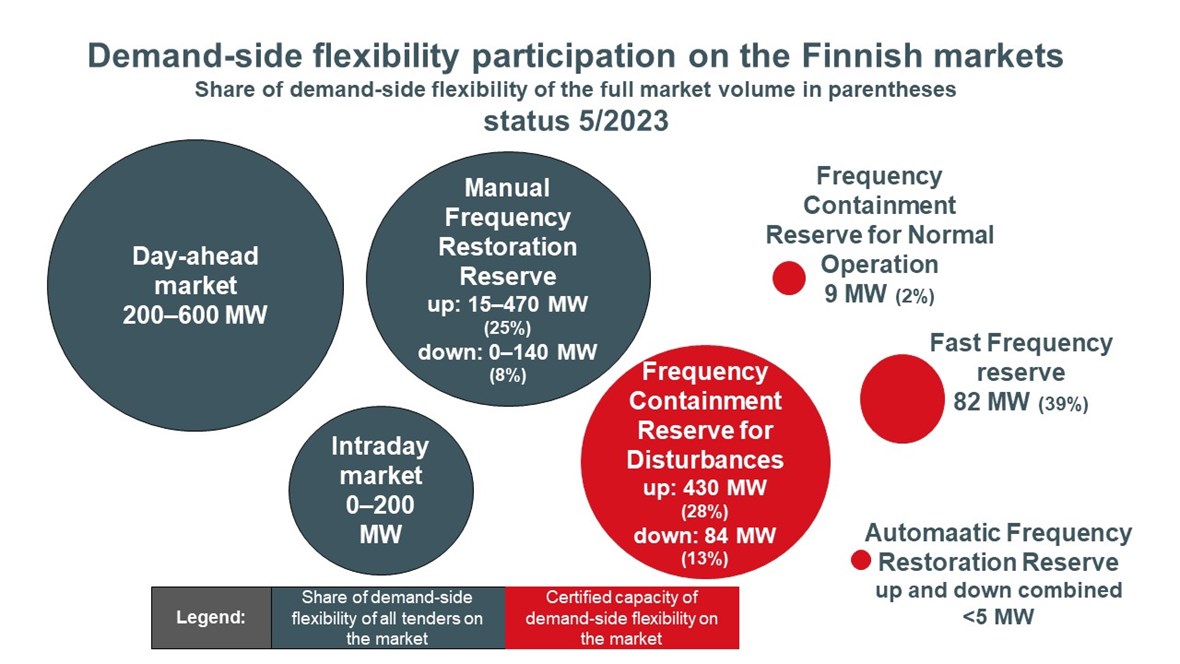Demand-side flexibility
Demand-side flexibility refers to changing the use of electricity guided by the price. This can mean, for example, moving consumption from hours of high consumption and price to a more affordable time. The consumer can also benefit from their flexibility by selling it to the electricity market, such as the reserve market maintained by the transmission system operator. More consumption flexibility is needed when the share of inflexible and weather-dependent production, such as nuclear, wind and solar power, in Finland's electricity production increases. The amount of electricity consumption and production must remain in balance at all times. Demand-side flexibility plays an important role in maintaining this balance cost-effectively. Demand-side flexibility is also known as demand response.
In Finland, electricity consumption has operated on the reserve markets used to maintain the power balance for a long time, however, focusing on large-scale industry, such as the forestry, metal and chemical industries. However, demand-side flexibility still has a significant potential to increase the supply on the reserve market. Industrial electricity consumption has also become more flexible by acting more actively based on the prices on the day-ahead market, promoting a balance between consumption and production. On the other hand, there are also various contract options available to end-consumers today, such as hourly priced electricity, which enable cost savings from the timing of consumption.
A new business on the electricity market are also the so-called aggregators, i.e. companies that combine small consumption and production units into a larger entity that can participate on different electricity markets. The consumer's own small-scale production can be equated with consumption flexibility, if it reacts to the market situation, such as high electricity prices, and it helps to reduce the electricity intake from the grid. An example of this kind of small-scale production in consumption are backup generators of buildings and commercial premises.
Participating in demand-side flexibility often requires investments, but in the long term it can be cost-effective for both the consumer and society. Electricity prices remain more reasonable when consumption is timed when there is plenty of electricity available, and there is no need to start up expensive peaking power plants.
Demand-side flexibility can participate in all marketplaces in the same way as power plants. Participating in reserves, for example, can mean a reduction of the power taken from the grid for only a few minutes, or an hour's interruption once a year. A consumer with an electric heater or an electric car charger would probably not even notice that the flexibility had occurred.
The number of activations, compensation levels and technical requirements of different marketplaces vary. You can read more information about the reserve and regulating electricity market here.
The amount of demand-side flexibility on the Finnish market:

Details
Visa Simola
Specialist
tel. +358 303 955 302
